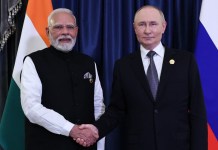What is the US Strategy in Afghanistan? The United States negotiated with Russia, China and the Persian Gulf countries about their role in the settlement of the situation in Afghanistan. This was stated on Tuesday by the US Secretary of State Rex Tillerson, speaking to journalists at the State Department. “We negotiated with China about the role it can play [in Afghanistan].We negotiated with Russia about the role it can play if it wants,” he said.
According to the Secretary of State, the United States, in fact, were on back foot in Afghanistan at least for the past year and a half. “We believe that we can reverse the course of what has been for at least a year and a half or so, at least we stabilize the situation and, we hope, we will begin to see certain successes on the battlefield,” he said. US will now look to re-analyze its US Strategy in Afghanistan.
NATO supported the new US Strategy in Afghanistan
NATO on Tuesday fully supported the new US strategy for South Asia and Afghanistan, which President Donald Trump told the day before. This was stated by NATO Secretary General Jens Stoltenberg. The new strategy confirms that the US military will remain in Afghanistan on a long-term basis. The United States will no longer announce the timeframe for the basic operations in that country and the exact size of its contingent and will act more pragmatically in order to combat terrorism, not aiming to achieve the building of Western democracy in the states of the region.
Trump stressed that the United States would not allow the repetition of the “Iraqi error” in Afghanistan, when, after the rapid withdrawal of US troops in 2011, all conditions for the rapid development of the future terrorist organization, the Islamic State were formed in the country. “I welcome President Trump’s new approach to Afghanistan and the region,” Stoltenberg said, “NATO remains fully committed to Afghanistan, and I look forward to discussing new approaches with the US Secretary of Defense, NATO member states and partners.”
He recalled that NATO countries have already agreed to increase the number of their non-combat mission “Strong Support” in Afghanistan since 2018. At present, the alliance states hold a contingent of instructors and advisers in this country of 12 thousand people. Their main efforts are directed to the training of Afghan special forces, air forces and commanders of the Afghan army.
The US launched a military operation in Afghanistan in the fall of 2001 in response to the attacks of September 11, 2001, in New York and Washington using passenger aircraft. Although 15 of the 19 terrorists were citizens of Saudi Arabia and the rest were from other Arab states, the US launched a war against Afghanistan, because the attack coordinator was the leader of Al-Qaeda Osama bin Laden, also a Saudi citizen. In December 2001 NATO joined the operation in Afghanistan, and since then it has been participating in this war for almost 17 years.
NATO withdrew its main combat forces from Afghanistan by the end of 2014, leaving a contingent of instructors and advisers in the country. According to the findings of the US Department of State inspector on reconstruction in Afghanistan, John Sopko, the authorities in Kabul in November 2015 kept under full control 72% of the country’s territory, and by November 2016 this figure was reduced to around 57%.




